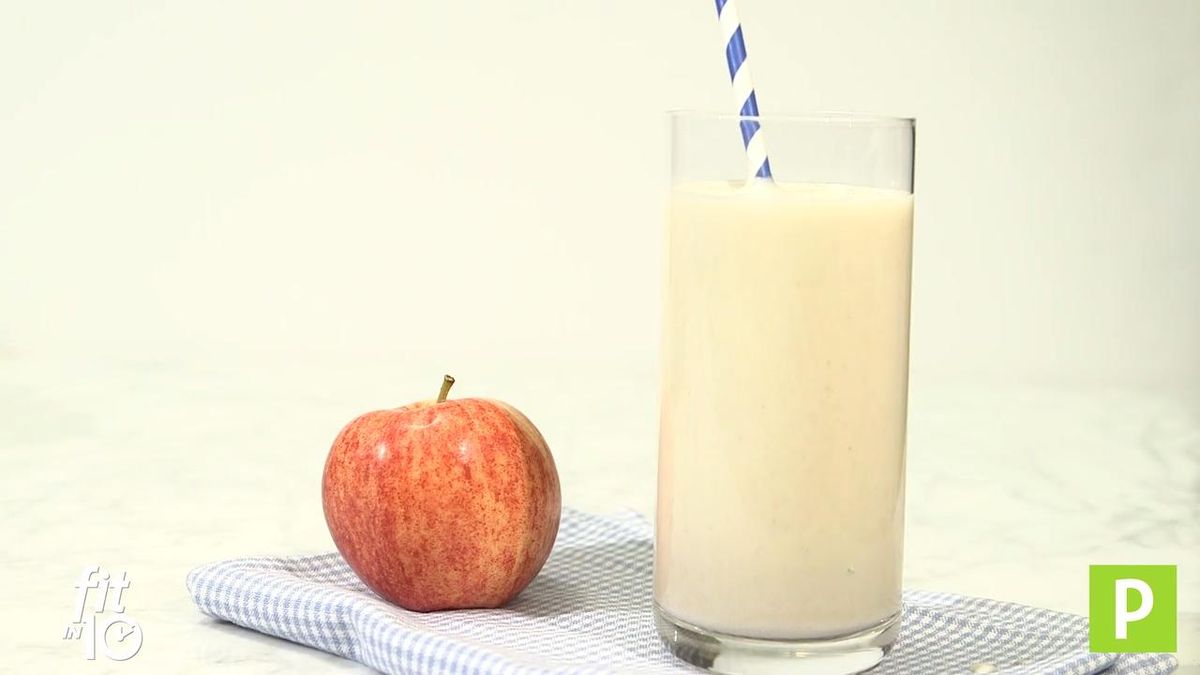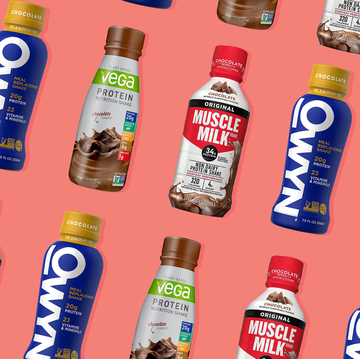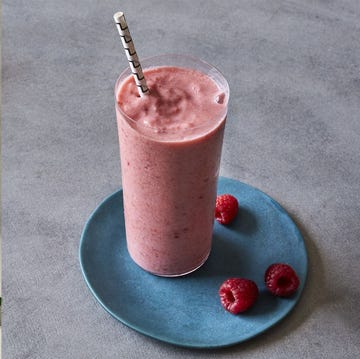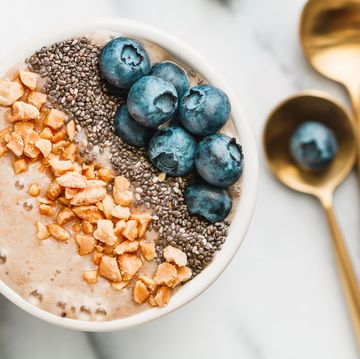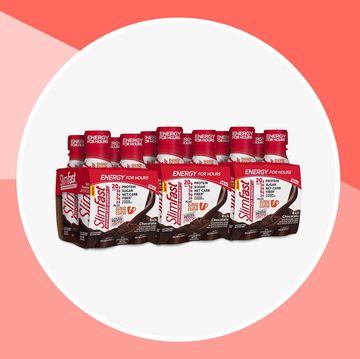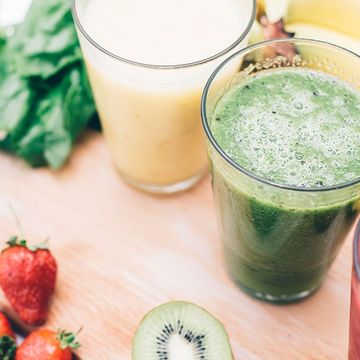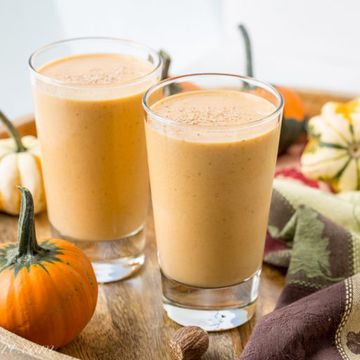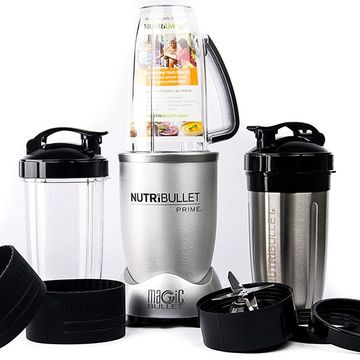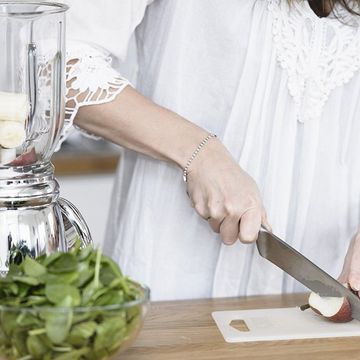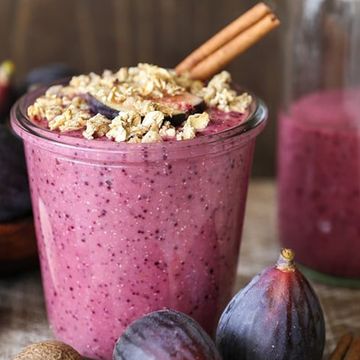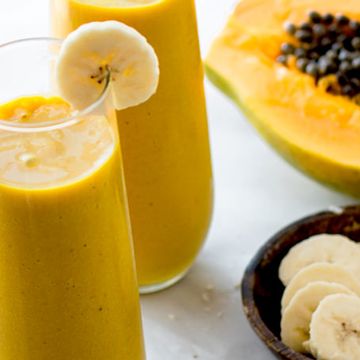If you already have your go-to smoothie recipe down to a science, you know that protein is the secret to blending one that will actually keep you full all morning long. Oftentimes, a quality protein powder (like these 5 best unsweetened, unflavored kinds) is the most convenient way to up your grams in a hurry. But the powdered stuff is far from your only option.
(Ditch processed foods and burn fat around the clock with the naturally sweet, salty, and satisfying meals in Eat Clean, Lose Weight & Love Every Bite.)
Odds are you’ve added avocado to the mix, and maybe you’ve even scooped in some hemp seeds before. Yet there are still plenty more protein powerhouses you probably haven’t even considered using in your breakfast drink. We asked nutrition experts to share the surprising ingredients they add to their blenders to boost protein intake and beat smoothie boredom. Here are six to try:
Chickpeas
Protein: 5 grams per ½ cup
That’s right, they’re not just for hummus or faux cookie dough. “Chickpeas are a very mild-tasting legume that offer a heaping dose of protein to any smoothie,” says Natalie Rizzo, MS, RD, a registered dietitian in New York City. “Plus, they blend well and will give your smoothie a creamy texture.” For just 100 calories, a ½ cup also gives you 22% of your daily value of slow-to-digest fiber, which contributes to keeping your morning hunger at bay. Make sure you drain and wash canned chickpeas before blending to get rid of that bean-y residue, plus any excess sodium. (You have to try these 10 tasty ideas for chickpeas.)
Try this delicious apple pie smoothie for a dessert-like breakfast treat:
Cottage Cheese
Protein: 14 grams per ½ cup
“My favorite way to pump up the protein in a smoothie is adding cottage cheese!” says Lauren Harris-Pincus, MS, RDN, author of The Protein-Packed Breakfast Club. “When you blend it, the texture transforms into a creamy base that is not tart like Greek yogurt, so you need to add less sweetener to your smoothie.” That’s a great thing, since too much of the sweet stuff can spike your blood sugar and leave you grumbling for a snack by the time you get to the office. (Here are 6 reasons you’re still hungry—even though you just ate breakfast.)
Not a huge fan of eating cottage cheese? Neither is Kim Feeney, MS, RD, a board-certified sports dietitian in San Antonio, Texas—except when she blends it into smoothies. “I have primarily tried it with fruit-based smoothies that I would like to be on the creamy side, especially with berries or citrus,” Feeney says. “The flavor of the cottage cheese is pretty muted so it primarily adds a mild salt flavor to a fruit smoothie.”
PREVENTION PREMIUM: 5 Delicious Smoothie Bowls That Will Transform Your Mornings
Pumpkin Seeds
Protein: 5 grams per 2 tablespoons
Adding seeds for a hit of protein isn’t exactly revolutionary, but flax and hemp get most of the love when it comes to smoothies. “Flax seeds have such a thick shell that unless they are ground you don’t really get the benefit. They just pass right through,” says Judy Barbe, RD, author of Your 6-Week Guide to LiveBest. Pumpkin seeds, on the other hand, offer the same combo of healthy fats, fiber, and protein, but break down in most blenders way easier. (We like Terrasoul Superfoods Organic Pumpkin Seeds, $15 for 2 lbs, amazon.com.) They’re also a rich source of magnesium, which helps regulate blood pressure and preserve bone density. (Here are 4 things that can happen if you’re not getting enough magnesium.)
Silken Tofu
Protein: 4 grams per 4 ounces
If you avoid dairy, consider this versatile soy alternative. “Soft (and practically tasteless) tofu is a great way to add creaminess to practically anything,” says Rizzo. (Case in point: this genius no-bake chocolate pie.) Plus, tofu is a complete protein source, meaning it contains all nine essential amino acids that your body can’t make itself.
Another benefit: “Foods high in soy protein can help to alleviate menopausal hot flashes and strengthen bones, thanks to the natural isoflavones they contain that imitate estrogen in the body,” says Caroline Apovian, MD, director of the Nutrition and Weight Management Center at the Boston Medical Center.
MORE: 6 High-Protein Dessert Waffles You Should Definitely Try
Ricotta
Protein: 14 grams per ½ cup
Like cottage cheese, ricotta packs major protein and will make any smoothie taste creamier. “It’s fairly bland, so the other flavors in the smoothie predominantly provide the flavor,” says Barbe. “Between Greek-style yogurt or cottage cheese, ricotta may be slightly thicker. A little more liquid from milk or juice offsets it.”
This cheese is more than just filler, though. The whole milk variety is also loaded with crucial vitamin D (12 IU per ½ cup), which studies suggest 42% of adults in the U.S. are lacking. Because D helps with calcium absorption and lowers your risk for a wide range of diseases, this is a smart add-in to your morning sipper. (Here are 8 surprising things you didn’t know vitamin D could do for you.)
Whole grain rolled oats
Protein: 5 grams per ½ cup
Okay, maybe you’ve tried oats in smoothies before, but who knew they were pumped up with protein? “If you have a high power blender, oats are a great addition,” says Tara Coleman, a clinical nutritionist with a private practice in San Diego, California. “Not only do they add protein but they are a great source of fiber as well.” Oats are also cheap (try Bob’s Red Mill Old Fashioned Rolled Oats, $14 for a pack of 4, amazon.com), so you can stock up and scoop them into your blends morning after morning without stressing your wallet or altering the taste of your favorite smoothie very much.

